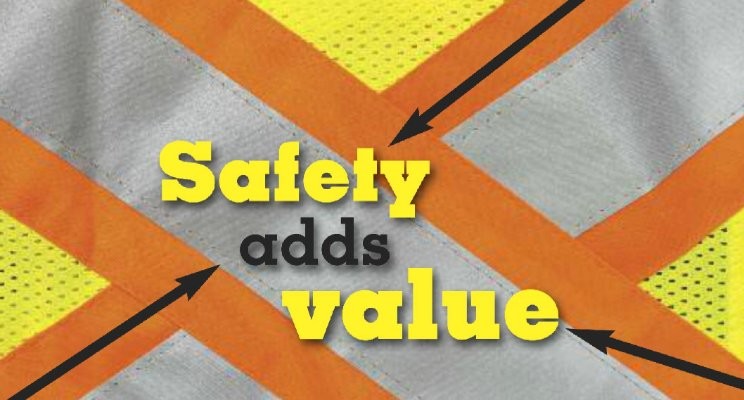
Safety Adds Value
Let’s face it. The amount of stress that community managers and HOA board members take on while budgeting for construction projects is plenty. Deciding upon the right combination of contractor, product, and cost, to determine the best overall value is even MORE stressful. However, the stress created throughout those two stages of the purchasing process combined does not come CLOSE to the stress created once they figure out that they made the wrong decision.
The most common mistake when comparing construction bids – particularly on larger projects – is basing that decision solely upon who presents the lowest number. Whether the contractors themselves compile their own specifications based upon their own recommendations and capabilities, or you hire a consultant or engineer to devise a consistent specification, it is still impossible to compare apples to apples.
The specification is only one fragment of the overall value. Portfolios, experience, company missions, and even personal relationships and references can all be exaggerated and manipulated to the benefit of any good salesman. However, there is one aspect that many overlook; one that is vital to the long-term success of any company in the construction industry: their safety record. Unfortunately, to run a large company from the ground up with a strong commitment to safety is NOT the least expensive business model. That cost needs to be absorbed somewhere, and that place is in the cost of the overall project bid. Therefore, it is crucial that all board members and managers realize the value that this sort of company brings to the table in comparison to its competitors, for it may have a direct impact – and sometimes a very significant impact – on the overall outcome of the project and long-term cost.
Quality and safety are equal partners in the world of risk management, and one must realize that it is difficult to run an efficient and safe project resulting in poor quality. However, quality supervision requires extreme attention to detail in every aspect within a scope of work. This takes time, and time results in increased labor costs. It is for that reason that safety is often the first and most common overhead cost for businesses to cut. Unfortunately, the workers often become the victims of this cost-cutting strategy, and the property owners become open to added risk if an employee gets injured on their property.
The Occupational Safety & Health Administration (OSHA) was created under the United States Department of Labor in 1970 to assure safe and healthful working conditions for working men & women. OSHA sets the standards for construction safety and ensures their regulations are followed, but they are often understaffed and underfunded, so they could not possibly cover every ongoing project. The training and employment of safety administrators and managers, therefore, becomes the responsibility of the contractor and an added cost to that contractor’s bid, but an added value in terms of overall quality.
So how can one forecast the future performance of a contractor today as compared to the price they proposed for their service? You can look at their past and present practices in terms of their safety program.
The most common test is their Insurance Experience Modification Rate, Experience MOD, or “MOD Rating”. Contractors are compared to each other using claims data over a 3 year period. A rating of 1 is average. 1.25 is 25% higher than the average for that specialty, and anything less than 1 is indicative that you are dealing with a company that takes safety quite seriously. In comparison with one another, the lowest of those below 1 might be indicative of a more well-established Safety Program.
The fact is that every apple is unique, and they are also unique in how they interact with other objects in the basket. For instance, certain contractors are better at installing certain products than others. Some have expertise by limiting themselves to one type of application, but others realize that there are several other options on the market that provide comparable performance at a more competitive cost. There are also contractors who are more service orientated and offer better service post-production, while the cheapest guy may virtually disappear after he is paid.
On the flip side, many think they are making things easier for themselves by hiring someone to put together a single specification. While pursuing this course of action, it is important that you realize that many consultants, engineers, and architects are influenced by a product they either directly or indirectly represent. Not only that, but they may also have a bias toward certain contractors who sell higher quantities of that particular product. You also add one more person into the loop who needs to make a profit from your decision – an additional cost that needs to be absorbed somewhere.
In closing, you will do yourself more justice if you keep an open mind. Realize the overall VALUE of what is being proposed. There is nothing wrong with accepting one consultant’s specification with one contractor he/she may recommend while putting that up against another consultant/engineer’s specification with a contractor or two they may recommend. Every system, product, and contractor has its own advantages and disadvantages. It is not your duty to determine the least expensive solution; it is your duty to determine which option will provide the best overall value for your unique community.

